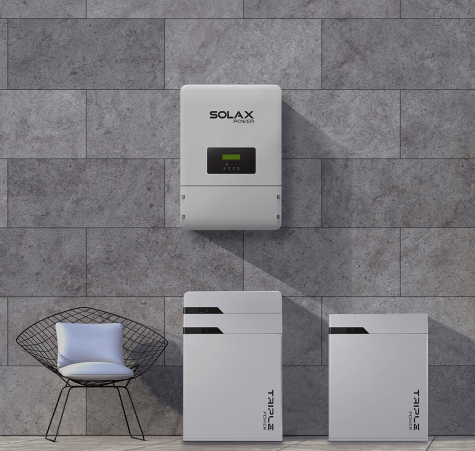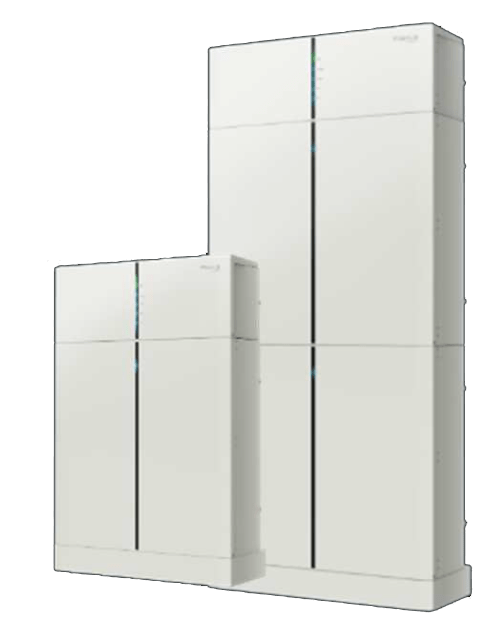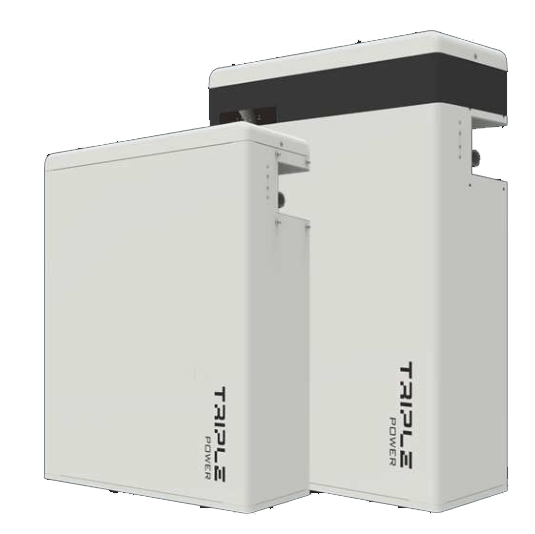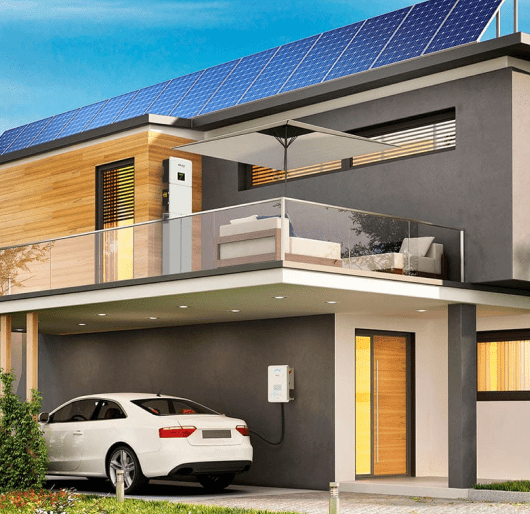
X1 Hybrid-G4 hybrid inverters are available in both M and D versions. Power range 3/3.7/5/6/7.5 kW. For installation with MATEBOX, order the M version. To use the EPS function, just use the inverter variant D or use variant M with MATE-BOX Basic.
X3 Hybrid-G4 hybrid inverters are available in both M and D versions. Power range 5/6/8/10/12/15 kW. For installation with MATEBOX, order the M version. To use the EPS function, just use the D variant inverter or use the M variant with MATE-BOX Basic. The MATE-BOX Advanced can also ensure the operation of your appliances in the event of inverter breakdowns.



SOLAX SMART EV CHARGER is an intelligent charging station for electric vehicles from the leader in hybrid inverters. It allows dynamic charging, limiting the charging current from the grid, using maximum energy from your PV plant.
It can be installed both to existing inverters, but it works perfectly with SOLAX inverters, where you can use all its functions to the full and also guarantee perfect compatibility and synchronization.

By setting this function, the user selects the maximum capacity of the grid at the connection point, and the Smart EV Charger will not exceed this capacity during charging, regardless of the charging mode in progress. This function is adjusted in real time depending on the current power consumption at the connection point.

The amount of the subsidy is normally up to CZK 205,000 for PV plants (in the case of a favoured region, up to CZK 225,000), up to CZK 180,000 for heat pumps, up to CZK 60,000 for charging stations, plus it is possible to draw a so-called combination bonus and achieve a subsidy of up to 60% for family houses.
The amount of the subsidy always depends on a number of parameters depending on performance, energy savings, etc. The subsidy can be up to 60 % of the total investment for family houses, up to 50 % for apartment buildings, up to 50 % for companies and up to 75 % for municipalities.
It all starts with the conclusion of a contract for work. This is followed by submitting an application for connection of the PV plant to the LV network of the local distributor (ČEZ,a.s., EG,D a.s., PRE). The legal deadline for processing is 30 days. Then the project documentation is prepared and sent to the distributor for approval. After its approval, independent installation of the PV plant starts, which takes 4-5 working days. The initial inspection is carried out and the actual design documentation is prepared, everything is sent to the distributor for approval with the request for the first parallel connection. This is followed by meter replacement and connection to the LV network. Now we can start processing the application for subsidy and send it to the state environmental fund. The usual processing time for the subsidy is 2 months.
Manufacturers claim a lifetime of more than 30 years for PV systems. The efficiency of PV panels may decrease over their lifetime, but manufacturers guarantee 90% efficiency after 12 years and 80% panel efficiency after 25 years.
Solar panels are weatherproof and self-cleaning – the panels are washed by rain. Dust on the panels under normal conditions causes a loss of performance in the units of percent. The snow on the panels themselves will slide off very quickly because the surface of the panels is glass. Long-term dirt build-up at the edges of the panels can be a problem for panels installed at less than 15° inclination.
The New Green Savings state subsidy for the purchase of a photovoltaic power plant is intended for all owners of family houses. This applies to owners of both completed buildings and new buildings under construction. For the latter, however, the approval of the subsidy is conditional on the date of approval, which must be confirmed within 9 months of the application for the subsidy for the photovoltaic power plant. Our PV solution is always designed to meet all the conditions for obtaining the subsidy. In addition, we will handle the administration associated with the subsidy application for you.
During the winter months, the PV plant produces about 15 to 30% of its installed capacity. Of course, there may be days when it is freezing and the sun is shining, then the PV can produce more energy than in the hot summer months.
Photovoltaic water heating works similarly to hybrid inverter and battery storage power plants. At the time when the control device detects that the PV production is above the possible consumption of the house and the electricity would then be supplied to the distribution grid, it switches on the ohmic device (in the case of water heating, think electric boiler) and directs the excess energy to this device. In times of surplus we therefore heat our domestic hot water. With a well-designed system, DHW can be heated from spring to autumn purely from the surplus of the PV plant.
If you are interested in our services or if you have any questions, please contact us.